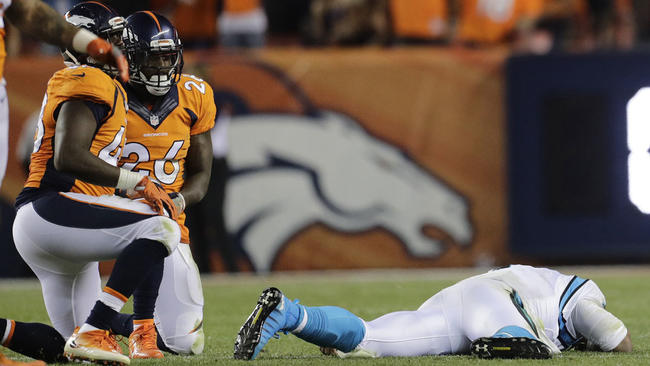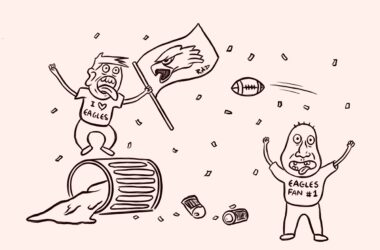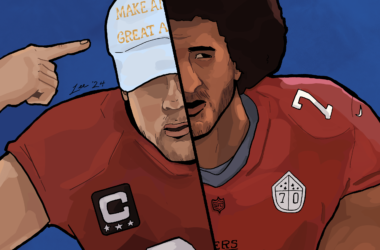The first two weeks of the NFL season have been confusing for NFL players. The opening game of the season saw the league return to the 1970s when big hits and headshots were commonplace. Specifically, in week one, Carolina Panthers’ quarterback Cam Newton, one of the biggest quarterbacks in the league, took two nasty helmet-to-helmet shots from Broncos’ defenders Brandon Marshall and Darian Stewart but stayed in the game, seemingly in contravention of the league’s concussion protocol. However, this past week, in the Buffalo Bills-NY Jets game, Bills’ quarterback Tyrod Taylor—a much smaller quarterback—was temporarily removed from the game to be evaluated for a concussion in the third quarter after taking a particularly violent hit.
Inconsistent application of the concussion protocol, which requires any player who appears concussed to be removed from the game and assessed, has led fans to criticize the NFL. Former NFL official Mike Pereira said, “what disappointed me the most [about the hits on Cam Newton] was how they basically went against protocol with 36 seconds to go. The shot Newton took from Stewart on the offsetting fouls, protocol has Newton out of the game, and it starts with the referees.”
The reasons the officiating crew did not pull Newton from the game are unclear. Generally, quarterbacks are more protected than other players because they are often defenseless and considered the most important players in the game.
Many believe the referees treated Cam Newton unfairly because he is physically bigger than the average quarterback. Panthers’ Tight End Greg Olsen was particularly critical of the officiating.
“Treat him like a quarterback,” said Olsen. “I know he's the biggest guy on the field, but he's still a [quarterback]."
Regardless of his size, Newton should have been examined after both of those head shots. That’s not just a failure of the referees who didn’t call the penalties, but also the NFL trainers who are supposed to be watching for headshots.
The way referee Ed Hochuli handled Buffalo Bills quarterback Tyrod Taylor after he took a huge hit on a third quarter play against the New York Jets was textbook. It was clear that Taylor did not want to come out of the game, but Hochuli insisted that Taylor be checked. Two plays later, Taylor was back in the game. When concussion protocol works, it’s that simple.
When it come to player safety, the NFL treats all quarterbacks differently. Certain top-tier quarterbacks like Tom Brady and Drew Brees seem to get more favourable calls because of their status in the NFL. Late hits against these top guys are regularly called and their games are strictly officiated in an effort to protect them from harm. Larger quarterbacks like Cam Newton and Ben Roethlisberger tend not to be protected by NFL officials. Meanwhile, smaller quarterbacks, such as Tyrod Taylor and Dak Prescott, are ruled more strictly despite playing a similar type of game. These quarterbacks’ play styles involves a lot of play-action rollouts and running outside of the pocket. When these smaller players leave the pocket, they are still treated as quarterbacks—as opposed to Newton, who is often seen as a runner—benefiting from protections that other players do not receive. The NFL needs to start calling all quarterbacks equally. If the league is as serious about safety as it claims to be, it’s beyond time to prove it.









